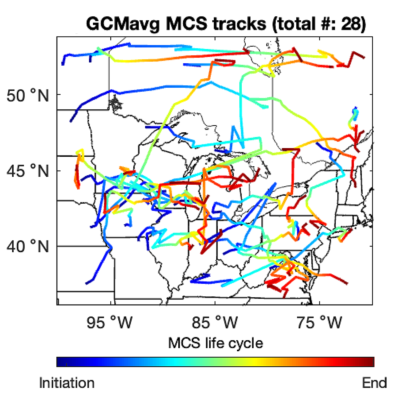Warming Climate Shifts Summer Rain Patterns Over the Great Lakes Region
Climate change poses a challenge to predicting how summer precipitation will shift in the Great Lakes region. This study investigates the behavior of two types of summer storms: isolated deep convection (IDC), which are typically isolated and short-lived, and mesoscale convective systems (MCS), which is a larger collection of storms that can last for several hours. Researchers found that future warming will cause MCS precipitation to shift eastward, intensifying rainfall over the downwind regions, while IDC storms will become more intense and cover a larger area, especially to the north of the Great Lakes. This shift is driven by increases in atmospheric moisture and changes in key thermodynamic variables, such as the lifting condensation level which affects where and when cloud formation begins.
Understanding how different storm types respond to warming helps address the critical problem of improving regional climate predictions for water management. This is particularly important for the Great Lakes, which influence regional weather and water resources. The findings provide insight into future extreme weather events; warming will likely cause stronger and longer-lasting storms which can negatively impact agriculture, infrastructure, and ecosystems. These results highlight the need for climate models that capture the interaction between large water bodies and the atmosphere.
In this study, researchers used high-resolution climate simulations to assess how global warming will impact summer precipitation in the Great Lakes region. Climate simulations revealed distinct shifts in storm patterns, with MCSs moving eastward and IDC storms becoming more intense. Key thermodynamic variables, like lifting condensation level and atmospheric moisture, were identified as critical factors driving these changes. This research is crucial for predicting future weather extremes and it highlights the importance of considering lake-atmosphere interactions in regional climate models.

